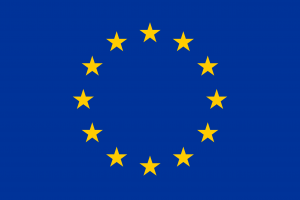South Sudan | Building resilience and transforming lives through roads and infrastructure

Years of conflict and climate shocks have deteriorated roads and bridges leaving South Sudan’s rural communities cut off from essential services. To improve access, the EU has supported the rehabilitation and the construction of vital infrastructure.
Through the EU support and the work of World Food Programme (WFP) and the United Nations Office for Project Services (UNOPS) rural communities in Northern and Western Bahr el Ghazal and the Greater Upper Nile region are gaining better access to markets, schools, and health facilities. Over the past decade, more than 398km of feeder roads have been constructed and rehabilitated and 306km maintained, helping to reconnect villages that were once isolated.
The163m long climate-resilient Nyamlel Bridge, built to facilitate cross-border trade with Sudan, has improved mobility and revitalised local economies, creating new opportunities for farmers, traders, and small businesses.
EU also supported rural communities by establishing four market facilities, twelve WASH[1] facilities. Five Rural Aggregation Centres have been built, enabling collective storage of goods, thereby improving market access. Two seed banks have been created to boost crop productivity, and 30 shallow wells constructed to ensure consistent access to water.

INTPA
Key irrigation and flood-control structures — including a 3.5 km water channel and five dykes — further protect farmland and sustain food production. These investments improve connectivity, boost local economies and create jobs in some of South Sudan’s most underserved areas.
Infrastructure development has been complemented by initiatives for empowering youth and women through skills training and business support. Youth-led transport groups were established to move farm produce more efficiently, with members trained in financial literacy and group management. Local artisans received training and grants to produce agricultural tools, creating new income opportunities. Technical training was also provided enabling participants to start their own businesses.

INTPA
John Akuar, from Kayango, says: “I learned welding and how to operate heavy machinery. I plan to start my own welding business in Kayango Market.” Martha Adut Anei, a young woman from Aweil North County employed during the bridge construction recalls that before the project: “Life was not easy—business and employment opportunities were nearly non-existent, especially during the rainy season when we were cut off by the Nyamlel River.” Now she explains: “I earn enough to support my family and cover their education.”.
Farmers like Tereza Atong Ineth have expanded commercial crop cultivation, selling products such as groundnuts, sorghum, and cassava more easily thanks to improved access. Greater security and trade—particularly around the Nyamlel Bridge—have further strengthened livelihoods and economic opportunities for local communities.

INTPA
Feeder roads constitute a key area of EU cooperation in South Sudan and form the backbone of the Green Economy sector support. Between 2011 and 2025, the EU invested EUR 99.2 million in infrastructure—51.2% of its total support to the Green Economy sector. This investment has delivered tangible results: more than 1400 kilometres of feeder and track roads were constructed or maintained, i.e., 12.6% of South Sudan’s secondary road network. It improved access for more than 1.8 million people across four states, while journeys on the targeted roads are now four to five times faster than before, significantly improving mobility for local communities.
Under the SSA MAAP 2026-2027[1], the EU Delegation plans to further support the sector by funding the upgrading of almost 150 km of feeder roads to year-round standards.

INTPA
